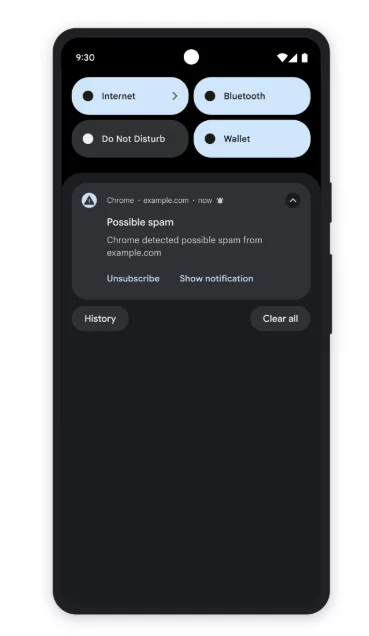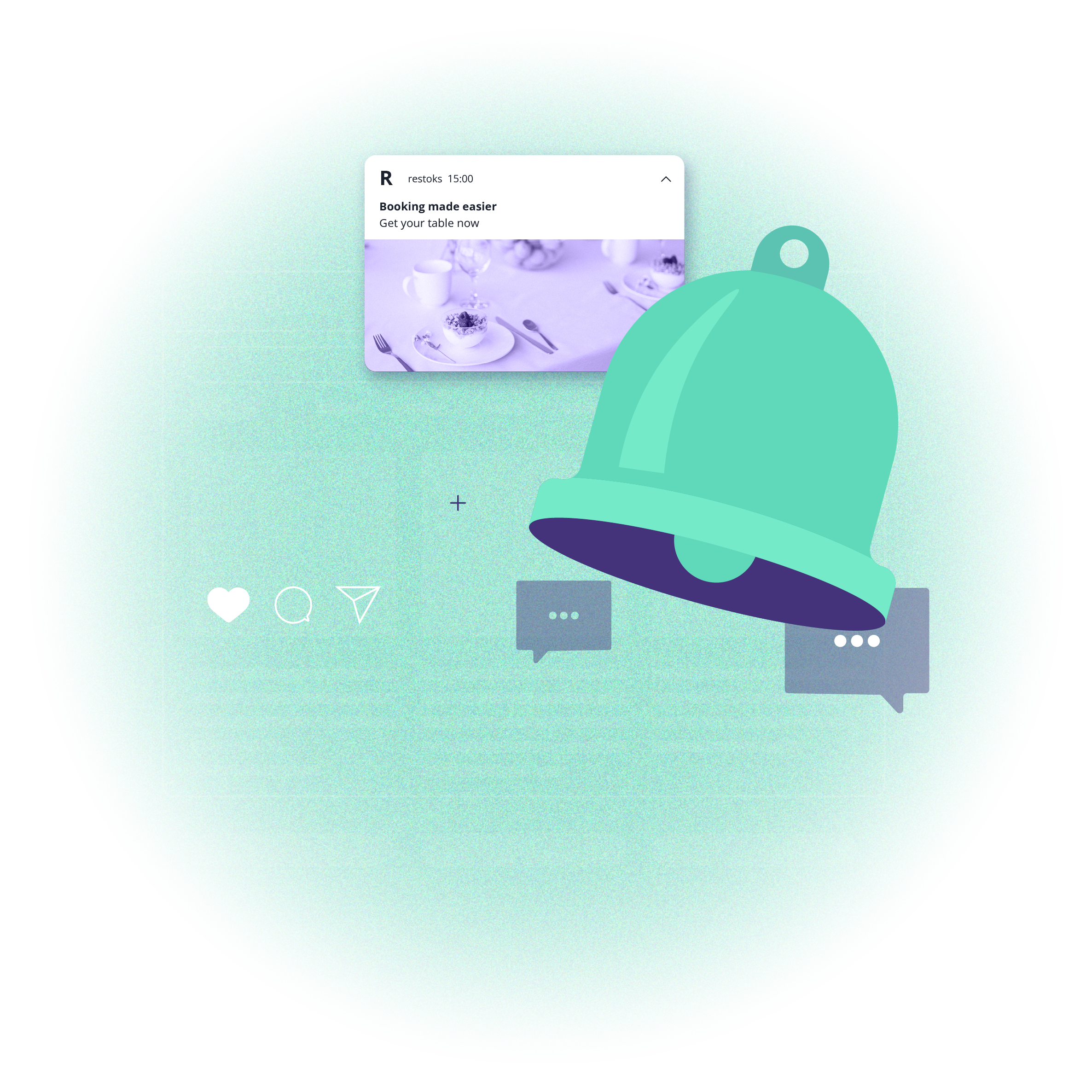Google Chrome’s new notification policy - how to adjust your web push strategy
 Olha Lypnytska
Olha Lypnytska-doq5lydusg.webp) © by Freepik
© by FreepikThe web push ecosystem is changing fast, and 2025 brought some of the biggest updates yet. Google Chrome has introduced several new mechanisms designed to protect users from spam, deceptive content, and notification overload.
For publishers and brands relying on push notifications for real-time communication, traffic, and conversions, these changes may influence both subscriber base size and engagement metrics.
The good news? With the right strategy, you can stay ahead of these changes – and even strengthen the quality of your audience.
Below is a breakdown of what Chrome changed, what it means for your push performance, and what we at PushPushGo recommend based on our data.
What Chrome changed in 2025
Machine Learning filtering for spam-like notifications
In May 2025, Chrome rolled out an on-device machine learning model that evaluates notification content before it appears on a user’s screen.
This system:
classifies messages as “useful” or “potentially spammy”
flags misleading or deceptive content
analyzes notification wording, frequency, and engagement
uses internal blacklists of known abusive patterns
If a notification appears harmful or looks like spam, Chrome can:
✅ show a warning, or
✅ automatically unsubscribe the user from that website’s notifications.

Example of a notification identified as potentially spammy
This update applies primarily to Android, but the logic influences Chrome’s broader anti-spam strategy.
Automatic removal of notification permissions
On October 10, 2025, Chrome announced a new step - automatically revoking notification permission from sites with low user engagement.
Here’s how it works:
If users haven’t interacted with your site recently and your notifications are ignored or dismissed, Chrome may unsubscribe them automatically and show a message such as:
“Chrome unsubscribed you from notifications due to low activity.”

Users can re-enable notifications through Safety Check, but for many websites, this has caused a noticeable drop in subscriber numbers.
Chrome’s own tests showed a big reduction in unwanted notifications with minimal loss of meaningful engagement - but for publishers who send more frequently, the impact is already visible.
Quieter UI and easier opt-outs for users
Although Chrome’s Quieter Notification UI was introduced in earlier versions of the browser, Google is intensifying its “Quieter Notification UI,” giving users:
easier access to unsubscribing
warnings when a site sends too many low-quality pushes
protection from “nagging” permission prompts
In short, Chrome wants fewer irrelevant notifications and is actively taking action for the user to achieve this.
What this means for your web push subscriber base
You may see:
Increased opt-outs
Particularly for websites with:
high sending frequency
low CTR
repetitive mass campaigns
click-baity or overly promotional content
Permission revocations
Chrome may automatically unsubscribe dormant or disengaged users.
Stricter filtering of low-quality content
Notifications perceived as misleading or spammy risk being blocked before they reach the user.
However, and this is key, Chrome’s goal is not to punish legitimate publishers. Their data shows that these changes help boost engagement for sites that send meaningful, targeted, relevant notifications.
How to prevent subscriber loss?
Starting from Q4 2024, we began monitoring safe browsing–related unsubscribes across our client base. After analyzing projects most impacted by Chrome’s policy changes, we have identified clear patterns and actionable ways to prevent subscriber loss.
1. Monitor sending frequency
Avoid exceeding 4 notifications per day unless you see strong user engagement that justifies more frequent communication.
Excessive frequency is one of the clearest triggers for Chrome’s automated filters.
You can also set up capping, a maximum number of notifications a subscriber can receive per day. To enable this feature, please contact our support team at [email protected].
2. Maintain a minimum 4-hour interval between campaigns
Sending campaigns too close together can:
lower CTR
raise user fatigue
signal “spam-like behavior” to Chrome’s ML model
Spacing messages protects your deliverability.
3. Focus on truthful, high-quality content
Chrome’s ML checks whether notifications:
mislead users
include suspicious language
contain manipulative calls to action
Avoid vague or exaggerated messaging. Be specific, honest, and helpful.
4. Target your campaigns - don’t rely on mass sends
Sites sending mostly “send to all subscribers” campaigns were affected the most.
Use:
segmentation
behavioral triggers
category preferences
geo-based sends
Personalized messaging keeps engagement high and prevents Chrome from reducing your reach.
5. Watch your engagement metrics closely
Chrome considers user interaction signals. If a segment hasn’t engaged for a long time:
reduce frequency
use reactivation campaigns
Quality of engagement matters more than quantity of subscribers.
6. Complement push with onsite notifications and pop-ups
If Chrome blocks or revokes permissions, on-site communication tools help you:
reconnect with users
regain subscriptions
explain how to re-enable notifications
Summary: how to stay ahead of Chrome’s changes
Chrome’s 2025 updates push the industry toward relevance, transparency, and user protection.This is good news for companies that:
send meaningful content
use segmentation
respect user attention
maintain healthy frequency patterns
And a challenge for those relying on volume alone.
But with thoughtful adjustments and the right tooling, you can maintain a strong subscriber base and even improve your engagement.
At PushPushGo, we’re monitoring Chrome’s changes closely and adjusting our best practices based on real data from our clients. We will continue sharing new insights and recommendations as Google rolls out additional updates.

Growth Marketing Manager @PushPushGo
Passionate about advertising, digital technologies and marketing itself. Life motto: "Growth starts out of the comfort zone".
Try PushPushGo to engage and connect with your audience.
Create an account and start testing!





